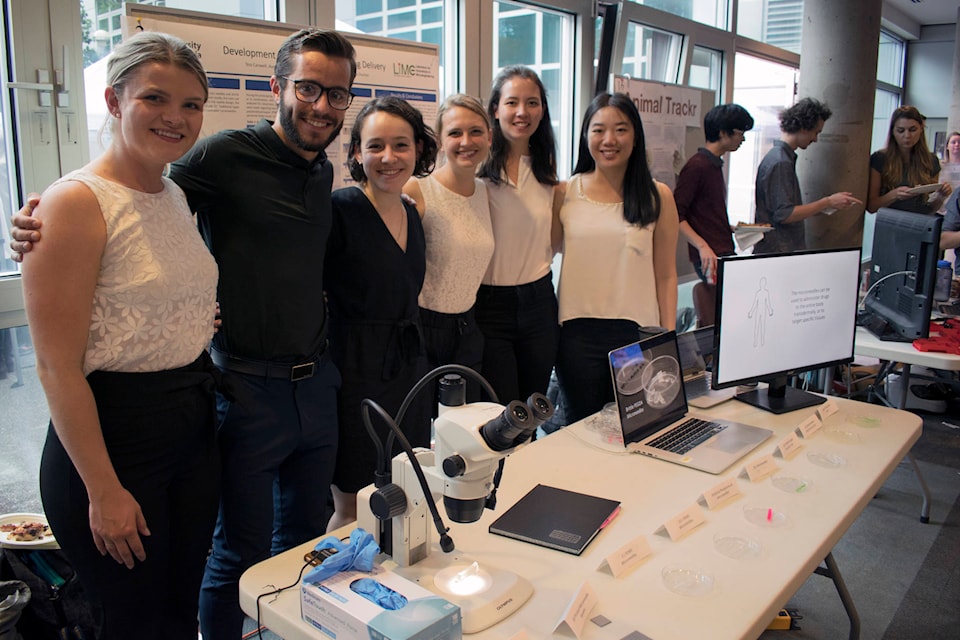Painless needles? Apparently they exist, and a team of students with the University of Victoria’s Faculty of Engineering is aiming to refine the technology.
The students — Tess Carswell, Austyn Roelofs, Xavier Araujo, Kaitlyn Suzuki, Cidnee Luu and Tess Charlton — showcased their work at an open-house event on campus Thursday. Their project aims to develop dissolvable microneedles capable of delivering drugs.
“With needles, a lot of people believe that, when you’re getting a vaccine or getting antibiotics, it needs to go all the way into your blood vessels, but your skin actually does a very good job of doing that,” Araujo said.
The group’s technology resembles a nicotine patch, with several small teeth. The teeth, which can hold specific dosages of drugs, are coated in sugar, and the patch dissolves when applied to body tissue.
“They’re painless,” Araujo said. “It feels like a cat’s tongue, essentially.”
READ ALSO: UVic engineering students use rocket science in winning project
The project was among more than 30 from Faculty of Engineering students on display at the event.
One — an alternative refrigeration system, dubbed the OTTER — aimed to develop a more precise, more controllable and portable method of refrigeration. The group’s prototype, which cools the liquid within a 355 ml aluminum can to 4 C from room temperature within three minutes, made use of the Peltier effect — an effect that sees heat emitted or absorbed depending on the movement of an electric current.
“When we first got it working, it was like every Christmas happened at once,” Ramunas Wierzbicki, one of the team’s members, said.
The aluminum can, of course, is the perfect object to prove the concept. The technology could be applied to numerous tasks, including scientific sample collection or even organ transplants, according to Wierzbicki.
“It’s highly controllable, very precise. It can be used for things much more sophisticated,” he said.
Another group’s automatic dicing unit, controlled via an app, represented the early stages of the group’s plan to develop a self-cleaning, self-sharpening device that automatically cuts vegetables or other foods.
One team designed a brake-lighting system for vehicles that shows different intensities of lighting depending on how hard a vehicle is braking or stopping.
Another developed an app to help users with recycling and composting. The app, after a user snaps a photo of their waste, tells the user in which bin — compost, garbage, etc. — to dispose their waste.
“What we’re trying to do is improve recycling rates and to also reduce the occurrences of recycling being contaminated because someone has put the wrong item in a particular bin,” Andrea Williams said.
Most of the students participating in the event are set to graduate soon.
